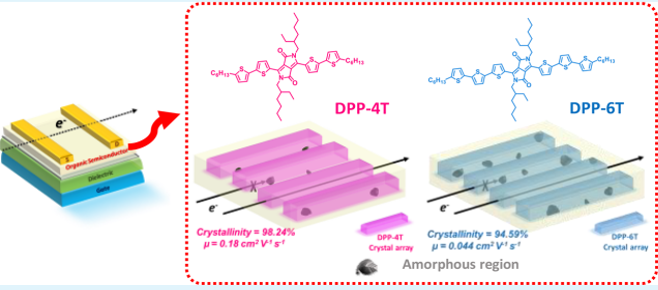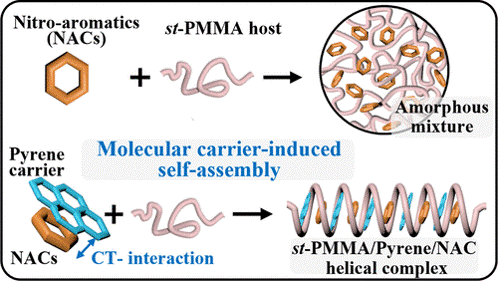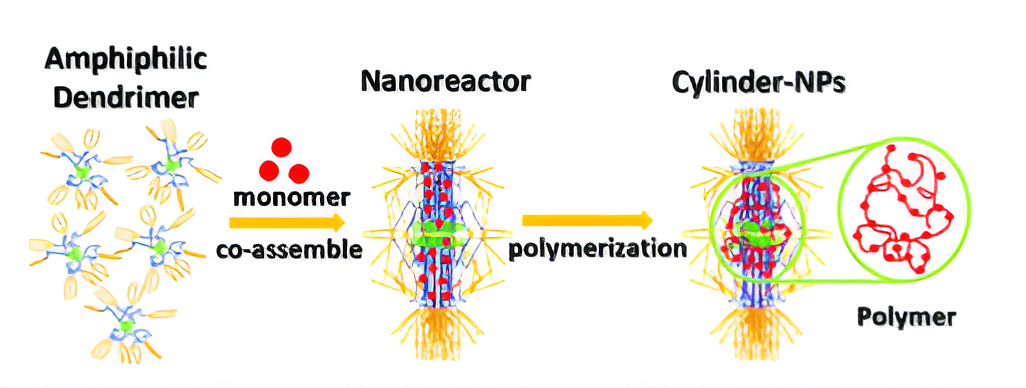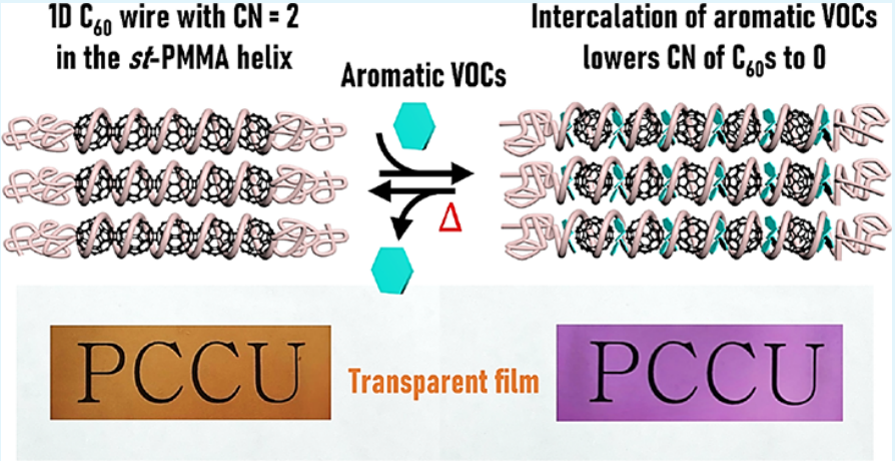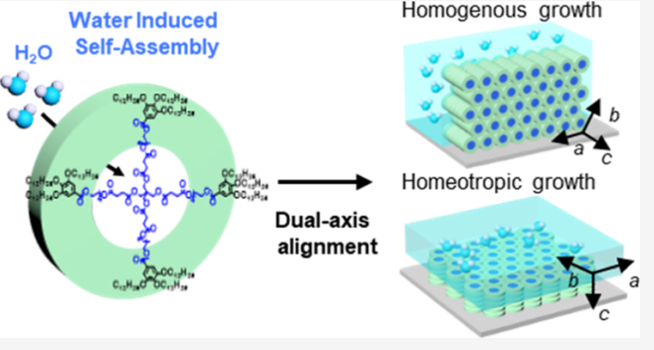Composition-Dependent Structural Modulation in st-PMMA/C60 Inclusion Complex Fiber and Its Influence on Vapochromic Response
Wen-Tsung Tseng, Pei-Yuan Yen, Yu-Hao Wang, Wei-You Huang, Wei-Tsung Chuang, and Kuan-Yi Wu*
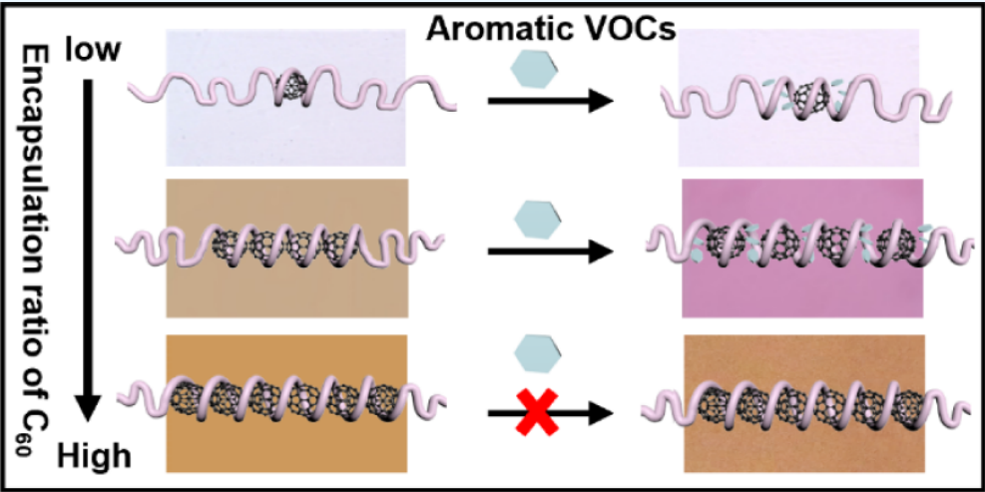
ABSTRACT
In multicomponent self-assembly, the chemical and compositional diversity of functional molecules governs the formation of complex architectures with distinct functionalities. However, the influence of composition in host−guest systems has rarely been explored. Therefore, this study investigates composition-driven structural modulation in the st-PMMA/C60 complex system. Tuning the encapsulation ratio (E-ratio) of C60 not only regulates the accumulation of C60s molecules within the st-PMMA supramolecular helices but also modulates the composition of the st-PMMA/C60 helical bundles in the semicrystalline morphology. Variations in these hierarchical structures subsequently affect the vapochromism of the st-PMMA/C60 complex. At low E-ratios, isolated C60s molecules within the st-PMMA helices do not trigger a vapochromic response to aromatic volatile organic compounds (VOCs). At a moderate E-ratio of 15 wt %, the st-PMMA/C60 complex forms optimal hierarchical structures, allowing aromatic VOCs to efficiently intercalate into the st-PMMA/C60 helices and perturb the πconjugation of C60s. However, at the maximum E-ratio, the st-PMMA/C60 complex loses its vapochromic response since the fully occupied supramolecular helices no longer encapsulate aromatic VOCs. Furthermore, the application of electrospinning to fabricate complex fibers increases the surface area, thereby improving the vapochromic response. Thus, this study highlights that hierarchical structures and vapochromic performance can be modulated by tuning the composition of host−guest systems.
KEYWORDS: vapochromic behavior, host−guest chemistry, inclusion complex, stereoregular polymer, C60.

